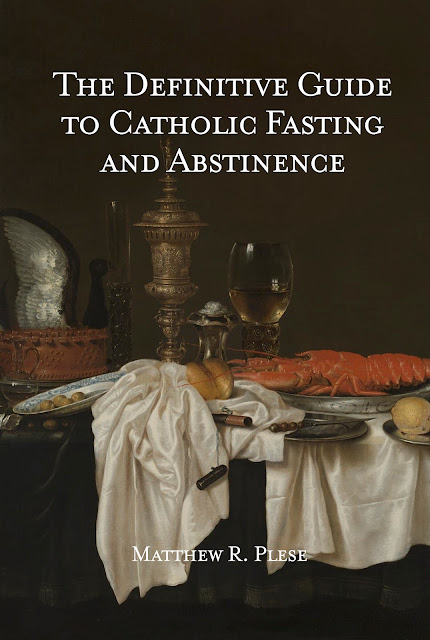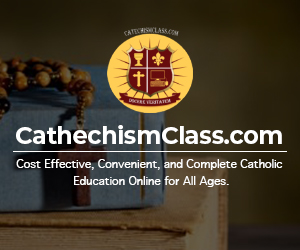| Sharon K |
St. John Baptist de la Salle |
| Lisa B |
St. Catherine Laboure - feastday 11/28 |
| Rosary Girl |
St. Thomas Aquinas - feastday 3/7 |
| Elynne |
St. Augustine of Canterbury - feastday 5/28 |
| Anna |
St. Hilary - feastday 1/14 |
| Alma R |
St. Andre of Canada |
| Cathy T |
St. Placidus - feastday 10/5 |
| Jessamine |
St. Anselm - feastday 4/21 |
| Jessamine's mom |
St. Casper (Wisemen) |
| Jessamine's dad |
St. Januarius - feastday 9/19 |
| Gie |
St. John of the Cross |
| Lory |
St. Albert the Great - feastday of 11/15 |
| Andy |
Blessed Basil Anthony Moreau |
| Mira |
St. Matthias |
| Frederick |
St. Boniface - feastday of 5/14 |
| Maximilian |
St. Ignatius of Loyola - feastday of 7/31 |
| Jessamine's future husband |
St. Charles Borromeo - feastday of 11/4 |
| Redita |
Our Lady of Ransom - feastday of 7/24 |
| A. |
St. Ludger - feastday of 3/26 |
| J. |
St. Edbert - feastday of 5/6 |
| R. |
St. Genevieve - feastday of 1/3 |
| C. |
St. Julia - feastday of 5/22 |
| Beata |
St. Leocadia - feastday of 12/9 |
| Krista |
St. Julia - feastday of 5/22 |
| William |
St. Marie Soubirous - feastday 2/18 |
| Ashley |
Our Lady of Ransom - feastday of 7/24 |
| Daniel K |
St. Mary of the Cross |
| Anastacia S |
St. Raymond of Penafort - feastday 1/23 |
| Susan G |
St. Bartholomew |
| Rethinam A |
St. Paul the Apostle |
| Tim W |
St. Callistus - feastday 10/14 |
| Kirsten S |
St. Damascus - feastday 12/11 |
| Barry M Family |
Frei Galvao |
| Andy M |
St. Paul the Apostle |
| Reene C |
St. Francis of Paula - feastday 4/2 |
| Sharry G |
St. Pius X - feastday 9/3 |
| Karleen |
St. Vincent de Paul - feastday 7/19 |
| Suzanne T |
St. Louis IX - feastday 8/25 |
| Peter R |
St. Medard - feastday 6/8 |
| Antoniette Q |
St. Casimir - feastday 3/4 |
| Catherine |
Benedict Joseph Labre - feastday 4/16 |
| Cyrene |
St. Vitus - feastday 6/15 |
| Ashley |
St. Susanna - feastday 8/11 |
| Cindy |
St. Gregory Naxianzen - feastday 5/9 |
| Dustin (son) |
St. Nicholas - feastday 12/6 |
| Hailey (granddaughter) |
St. Damian - feastday 9/27 |
| Lila (friend) |
Our Lady of Perpetual Help |
| Ray |
St. Hyacinth - feastday 9/11 |
| Rosalina |
St. Apollinarius - feastday 1/8 |
| Cristian |
St. Peter Canisius - feastday 4/27 |
| Nicolaus |
St. Eusebius - feastday 8/14 |
| Elena |
St. James - feastday 7/25 |
| Pablo |
St. Alphonsus Liguori - feastday 8/2 |
| Steve |
St. Petronilla - feastday 5/31 |
| Toni |
St. Mary Dei Pazzi - feastday 5/29 |
| Stephanie |
St. Elizabeth of Hungary - feastday 11/19 |
| Trissi |
St. Volusian - feastday 1/18 |
| Ken |
St. Tiburtius - feastday 8/11 |
| John |
St. Felician - feastday 6/9 |
| Lenore |
St. Dorothy - feastday 2/6 |
| Dan |
St. Julius - feastday 4/2 |
| Christopher |
St. Linus - feastday 9/23 |
| Bill (husband) |
St. Tiburtius - feastday 8/11 |
| Julie (wife) |
St. Anicetus - feastday 4/17 |
| Scott (son) |
St. Robert Bellarmine - feastday 5/13 |
| Blake (son) |
St. Thomas Aquinas - feastday 3/7 |
| Lara P |
St. Tiburtius - feastday 8/11 |
| Linda K |
St. Cyprian - feastday 9/16 |
| The Torres Family |
St. Theodulus - feastday 5/3 |
| Joey |
St. Quintin - feastday 10/31 |
| Nicole |
St. Nemesion - feastday 12/19 |
| Nathaniel |
St. Teresa - feastday 10/15 |
| Ava |
St. Casimir - feastday 3/4 |
| Eden |
St. Jovita - feastday 2/15 |
| Jacob |
St. Victorian - feastday 1/12 |
| Xander |
St. Maria Goretti - feastady 7/9 |
| The Canich Family |
St. Cyril of Jerusalem - feastday 3/18 |
| Alyson G |
St. Abdon - feastday 7/30 |
| Joannie |
St. Cosmas - feastday 7/27 |
| Sequoia S |
St. Lucy - feastday 12/13 |
| Dymphna |
St. Lupicinus - feastday 2/28 |
| Franciscus Carmelo |
St. Robert of Newinister - feastday 6/7 |
| Anonymous |
St. Gregory - feastday 11/17 |
| Anonymous' husband |
St. Paulinus - feastday 6/22 |
| Camie |
St. Eustace - feastday 9/20 |
| Cheryl |
St. Battista |
| Susan |
St. Firminus - feastday 9/25 |
| Suso |
St. Olympias - feastday 12/17 |
| J Walden |
St. Richard - feastday 4/3 |
| Denise G |
St. Martha - feastday 7/29 |
| Mary T |
St. Robert Bellarmine - feastday 5/13 |
| Michael Y |
St. Mary Dei Pazzi - feastday 5/29 |
| Steve Dixon, OP |
St. Theodulus - feastday 5/3 |
| John (my husband) |
St. Anselm - feastday 4/21 |
| Joseph (our son) |
St. Stephen - feastday 12/26 |
| Theresa (myself) |
St. John Bosco - feastday 1/31 |
| Claudia |
St. Robert of Newinister - feastday 6/7 |
| Heather B |
St. Thomas More - feastday 7/6 |
| Mariah |
St. Faustina |
| Randy Koralewski family |
St. Ephrem the Syrian - feastday 6/18 |
| Zach |
St. Anicetus - feastday 4/17 |
| Ana |
St. Hubert - feastday 11/3 |
| Molly |
St. Bertille - feastday 11/5 |
| Maggie |
St. James - feastday 5/11 |
| Ben |
Guardian Angels - feastday 10/2 |
| Katrina |
St. Gregory - feastday 11/17 |
| Janet |
St. Ladislas - feastday 6/27 |
| Joe |
St. Catherine of Siena - feastday 4/30 |
| Rachel |
St. Barbatus - feastday 2/19 |
| Jack |
St. Acacius - feastday 4/9 |
| Sabine |
St. Primus - feastday 6/9 |
| Manuel |
St. Wilfrid - feastday 10/2 |
| Gabriella |
St. Peter of Alcantara - feastday 10/19 |
| Paul W |
St. Callistus - feastday 10/14 |
| Tim V |
St. Cloud - feastday 7/7 |
| Elizabeth C |
St. Joseph the Workman - feastday 5/1 |
| Paul |
St. Eventius - feastday 5/3 |
| Deborah |
St. Matthias |
| Judy |
St. Pius X - feastday 9/3 |
| Joan |
St. Giulia Salzano |
| John |
St. Cassian - feastday 8/13 |
| Holly |
St. Cyril - feastday 7/7 |
| Ramona |
St. Celestine - feastday 4/6 |
| Fran |
Our Lady of Ransom - feastday of 7/24 |
| Don |
St. Barbatus - feastday 2/19 |
| Susan |
St. Catherine of Sweden - feastday 3/22 |
| Lydia |
St. John Francis Regis - feastday 6/16 |
| V. Family |
St. Bartholomew |
| Enrico |
St. John Cantius - feastday 10/20 |
| Maria |
St. Gertrude - feastday 11/16 |
| Peter |
St. Wilfrid - feastday 10/2 |
| Victoria |
St. Ursula - feastday 10/21 |
| Beata |
Our Lady of Mt. Carmel |
| IT |
St. Maria Goretti - feastday 7/9 |
| IN |
St. Achilleus - feastday 5/12 |
| OR |
St. Marcellus - feastday 10/30 |
| Marty |
St. Philip Neri - feastday 5/26 |
| KMOPAIC |
St. John Capistran - feastday 3/28 |
| Hkbflyers |
St. Hyacinth - feastday 8/17 |
| Bigbmike |
St. Bonaventure - feastday 7/14 |
| Blackjack |
St. Euphrasia - feastday 3/13 |
| Nikki |
St. Raphael - feastday 10/24 |
| Joey B |
St. Jude - feastday 10/28 |
| Dominic |
St. Silverius - feastday 6/20 |
| Gabe's Boy |
St. Alexius - feastday 7/17 |
| Peter S |
St. Cosmas - feastday 7/27 |
| KathyR |
St. Eleutherius - feastday 9/6 |
| Heidi |
St. Juvenal - feastday 5/3 |
| Lisa W |
St. William - feastday 1/10 |
| Amelia G |
St. Jerome - feastday 9/30 |
| Sandy |
St. Philip Neri - feastday 5/26 |
| AnissaG |
St. Gerard Majella - feastday 10/16 |
| LanceG |
St. Cassian - feastday 8/13 |
| JacobG |
St. William - feastday 1/10 |
| ElizabethG |
St. Hedwig - feastday 10/16 |
| MichaelG |
St. Eulogius - feastday 3/11 |
| JosephG |
St. James - feastday 5/11 |
| JohnG |
St. Albinus - feastday 3/1 |
| Laura G |
St. Raymond Nonnatus - feastday 8/31 |
| Troylyn |
St. Mathilda - feastday 3/14 |
| Tim |
St. Rufina - feastday 7/10 |
| TJ |
St. Venantius - feastday 5/18 |
| Samantha |
St. Gregory - feastday 11/17 |
| Jordan |
St. Slyvester - feastday 11/26 |
| Tracy |
St. Romanus - feastday 2/28 |
| Teshia |
St. Francis of Assisi - feastday 10/4 |
| Christian |
St. Cyprian - feastday 9/16 |
| Jagear |
St. Sabinus - feastday 12/30 |
| Mark |
St. Joachim - feastday 8/16 |
| Jess |
St. James - feastday 7/25 |
| Rebecca |
St. Alexius - feastday 7/17 |
| Clare |
St. Apollinarius - feastday 1/8 |
| Sue |
St. Ephrem the Syrian - feastday 6/18 |
| Rita C |
St. Thomas the Apostle |
| Annabelle |
St. Paul - feastday 6/29 |
| Joannie |
St. Cyprian - feastday 9/16 |
| Marty |
St. Cassian - feastday 8/13 |
| John L |
St. Alphonsa of the Immaculate Conception |
| John G |
St. Marcellinus - feastday 6/2 |
| Brendan B |
St. Gregory Barbarigo - feastday 6/17 |
| Guy C |
St. Sabinus - feastday 12/30 |
| Kathyrn D |
St. Gregory Barbarigo - feastday 6/17 |
| Josemaria C. |
St. Thomas of Villanova - feastday 9/22 |
| Jon H. |
St. Louise de Marillac - feastday 3/15 |
| Jneuman |
St. Elphege - feastday 4/19 |
| Carolyn C |
St. Christina - feastday 7/24 |
| Helen G |
St. Peter Nolasco - feastday 1/28 |
| Anne-marie |
St. Wilfrid - feastday 10/2 |
| Mrs Mouw |
St. Slyvester I - feastday 12/31 |
| Bernadette T |
St. Hyacinth - feastday 8/17 |
| Maribeth S |
St. Dormitilla - feastday 5/12 |
| Vi D |
St. Simon - feastday 10/28 |
| Kathy |
St. Luke - feastday 10/18 |
| Cheryl |
St. Robert Bellarmine - feastday 5/13 |
| Jacob |
St. Peter Damian - feastday 2/23 |
| Michele S |
St. Antonius - feastday 5/10 |
| Michele's Husband |
St. James of La Marcha - feastday 11/28 |
| Michele's Best Friend |
St. Petronilla - feastday 5/31 |
| Mark A |
St. Perpetua - feastday 3/6 |
| Michael B |
St. John the Apostle |
| W. |
St. Susanna - feastday 8/11 |
| A. |
St. Hegesippus - feastday 4/7 |
| Abigail |
St. Louis IX - feastday 8/25 |
| Jonathan A |
St. Jude - feastday 10/28 |
| Lois F |
St. Benedict - feastday 3/21 |
| Kathy |
St. Mary of the Cross |
| Jim |
St. Damien Joseph de Veuster |
| Benjamin |
40 Martyrs of Sebaste |
| Michael |
St. Paulinus - feastday 6/22 |
| Joseph |
St. Primus - feastday 6/9 |
| Ramzi |
St. Raphael - feastday 10/24 |
| Pam |
St. Faustinus - feastday 1/20 |
| Noah |
St. Candida Maria de Jesus |
| Noella |
St. Wilfrid - feastday 10/2 |
| Kate |
St. Alphonsus Liguori - feastday 8/2 |
| Jean |
St. Charles of St. Andrew |
| CJV |
St. Cyril of Alexandria - feastday 2/9 |
| Randy |
Our Lady of Lourdes |
| Mary |
St. Damien Joseph de Veuster |
| Josefina |
St. Anselm - feastday 4/21 |
| Peter |
St. Isaac Jogues - feastday 9/26 |
| Jennifer S |
St. Stanislaw Soltys |
| Mary K |
St. Jane Frances de Chantal - feastday 8/21 |
| Joseph |
St. John Chrysostom - feastday 1/27 |
| Lucielle |
St. John Baptist de Rossi |
| Patrick |
St. Onesimus - feastday 2/16 |
| James |
St. Lucy - feastday 12/13 |
| Patricia |
St. John Damascene - feastday 3/27 |
| John |
St. Catherine of Siena - feastday 4/30 |
| Mary |
St. Euphrasia - feastday 3/13 |
| Francis |
St. Rufina - feastday 7/10 |
| Janet R |
St. Potamiaena - feastday 6/28 |
| Minetta |
St. Paulinus - feastday 6/22 |
| Joanne |
St. Jerome Emilian - feastday 7/20 |
| Rob W |
St. Primus - feastday 6/9 |
| Aaardvark |
St. Melchior |
| Erika |
St. Felicitas - feastday 3/6 |
| Brittany |
St. Daria - feastday 10/25 |
| Lucy E |
St. John Chrysostom - feastday 1/27 |
| Elizabeth D |
St. Placidus - feastday 10/5 |
| Lisa |
St. Wenceslaus - feastday 9/28 |
| Melissa |
St. Andrew - feastday 11/30 |
| Ruby |
St. Candida Maria de Jesus |
| Tom P |
St. John Gualbert - feastday 7/12 |
| Helen T |
St. Slyvester I - feastday 12/31 |
| Beverly |
St. Melchiades - feastday 12/10 |
| Cidi |
St. Susanna - feastday 8/11 |
| Katrina |
St. Gertrude - feastday 11/16 |
| Krishan |
St. Cyril - feastday 7/7 |
| Kay W |
St. Zachariah - father of St. John the Baptist |
| Christine |
St. Bridget - feastday 10/8 |
| Ross W |
St. Scholastica - feastday 2/10 |
| Amanda W |
St. Padre Pio |
| Lee K |
St. Julian the Hospitaller - feastday 1/9 |
| Joseph Jr L |
St. Raphael - feastday 10/24 |
| Jeannie L |
St. Boniface - feastday of 5/14 |
| Teresa L |
St. Paul the Apostle |
| Anthony L |
St. Eventius - feastday 5/3 |
| Mark W |
St. Euphrasia - feastday 3/13 |
| Fina |
St. Benedict - feastday 3/21 |
| Missio |
St. John Cantius - feastday 10/20 |
| C/R |
St. Martin - feastday 11/12 |
| Requestor |
St. John Chrysostom - feastday 1/27 |
| Requestor's husband |
St. Edbert - feastday of 5/6 |
| John |
St. Apollonius - feastday 4/18 |
| Nikki |
St. Vincent Ferrer |
| Bbr1012 |
St. Victor - feastday 1/12 |
| Michelle |
Our Lady of Lourdes |
| Rick |
St. Teresa - feastday 10/15 |
| Sean |
St. Andrew Avellino - feastday 11/10 |
| Derek |
St. Cyril of Alexandria - feastday 2/9 |
| Dorothy |
St. Marcellinus - feastday 4/20 |
| Sekyle |
St. Soter - feastday 4/22 |
| Evangeline A. |
St. Andre of Canada |
| Tally |
St. Candida Maria de Jesus |
| Jacklyn C. |
St. Potamiaena - feastday 6/28 |






+Rite+(3).jpg)
.jpg)






